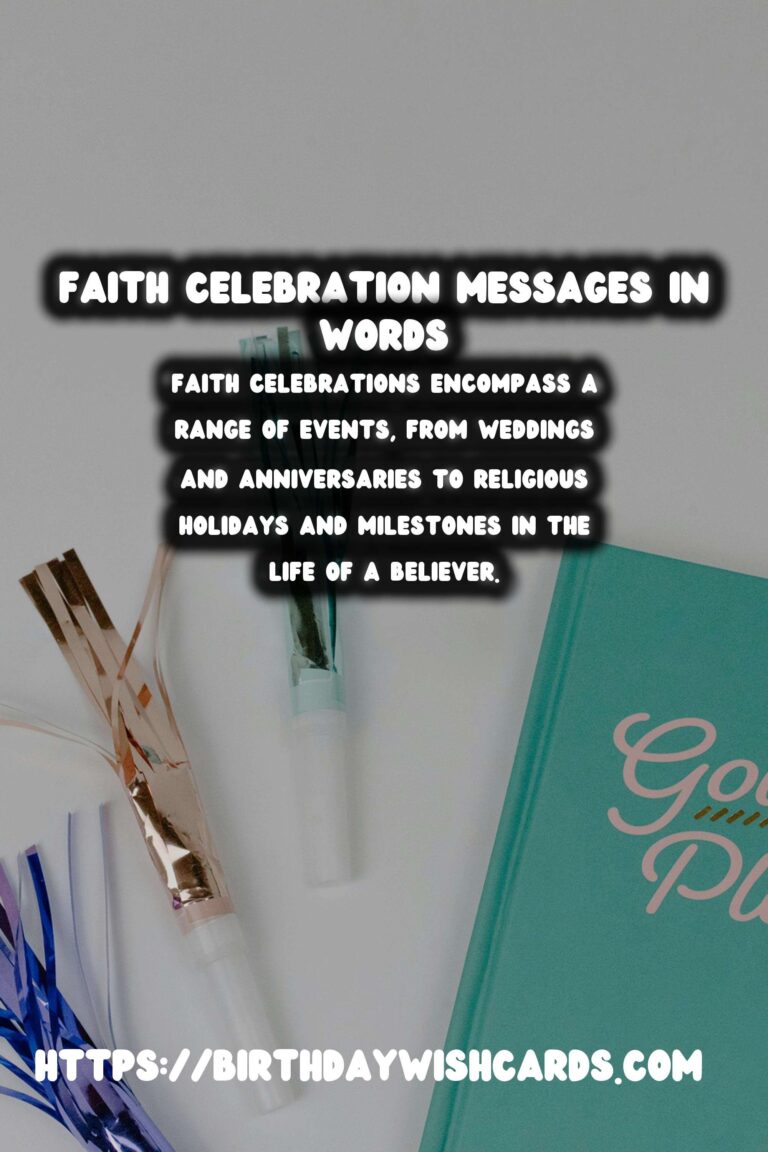
Faith celebrations encompass a range of events, from weddings and anniversaries to religious holidays and milestones in the life of a believer. Crafting heartfelt messages to commemorate these occasions can significantly enhance their meaningfulness. This article will explore classic ways to create effective faith celebration messages that resonate deeply.
Understanding the Importance of Faith Celebration Messages
Messages intended for faith celebrations serve as conduits for love, joy, and spiritual significance. Whether you are writing for a wedding, a baptism, or a holiday celebration, the message you choose can carry immense weight in reflecting the values and beliefs of the individuals involved. Thus, crafting these messages with care is essential.
1. Personalization is Key
One of the most effective ways to craft a meaningful message is to personalize it. Begin by considering the individuals or groups you are addressing. Incorporate their names, experiences, and specific faith traditions to create a unique message.
Example of Personalization
If you are writing a wedding message, mention some of the couple’s shared experiences or favorite Bible verses that inspire their relationship. For instance:
“Dear John and Sarah, as you embark on this beautiful journey together, remember the words from 1 Corinthians 13:4-7 that reflect your love’s deep essence.”
2. Incorporate Scripture
Using scripture is a classic way to add depth to your messages. Verses have a way of uniting believers and providing a spiritual foundation to the occasion being celebrated.
Choosing Relevant Verses
Select verses that resonate with the event. For a wedding, you might use Ephesians 4:2-3, while for a baptism, consider Matthew 28:19-20.
3. Emphasize Core Values
Faith celebrations often revolve around core values such as love, forgiveness, gratitude, and hope. Highlighting these values in your messages can create a strong emotional impact.
Crafting Value-Centered Messages
For instance, for a family reunion within a faith context, you could write:
“As we gather in faith and love, may our bonds be strengthened and our hearts filled with gratitude for one another.”
4. Use Figurative Language
Figurative language can make a message more memorable and poetic. Metaphors and similes can illustrate your feelings and sentiments beautifully.
Examples of Figurative Language
In crafting a message about faith, you might say:
“Your faith is a lighthouse guiding ships through the fog”—a powerful visual that resonates with many.
5. Share Personal Experiences
Sharing personal stories or experiences can strengthen your message. It adds authenticity and allows others to relate on a more intimate level.
Inspiring Personal Narratives
For example, during a baptism, you might say:
“Watching you grow in your faith is a journey I cherish; it reminds me of my own path and the love of Christ that guides us all.”
6. Consider the Audience
Your audience will significantly influence the tone and content of your message. Whether it’s for a wedding, church service, or family gathering, tailor your message accordingly.
Adjusting Tone for Different Events
For example, a wedding message will often be more romantic and affectionate, while a message for a memorial service may include sorrow and hope.
7. Include Blessings and Well Wishes
Ending your message with a blessing can provide closure and offer comfort to those celebrating their faith.
Examples of Blessings
Consider this ending for a wedding message:
“May your love bloom like a garden in the spring, watered by faith and nurtured by God’s grace.”
8. End with a Call to Action
Encouraging the recipient to take a particular action can make your message more interactive and impactful.
Action-Oriented Closing
For a holiday message, you might say:
“As you celebrate this holy season, take a moment to reflect on your blessings and share them with those in need.”
9. Utilize Quotes from Famous Figures
Incorporating quotes or wisdom from well-known figures in faith can enrich your message. This adds credibility and context.
Using Inspirational Quotes
For instance:
“Faith is taking the first step even when you don’t see the whole staircase.” – Martin Luther King Jr.
10. Format for Readability
The presentation of your message matters. Use clear formatting, divide paragraphs, and avoid large blocks of text to make your message inviting to read.
Structuring Your Message
Employ headings, bullet points, and short paragraphs. Create an engaging layout that draws the reader in.
Conclusion
Crafting faith celebration messages is not just an art; it’s a way to connect with others at pivotal moments in their lives. By personalizing your messages, incorporating scripture, emphasizing core values, and sharing personal experiences, your messages will touch hearts and transcend mere words.
As you embark on creating your next message, remember the power of love, faith, and fellowship—that is the true essence of celebration.
Faith celebrations encompass a range of events, from weddings and anniversaries to religious holidays and milestones in the life of a believer. Crafting heartfelt messages to commemorate these occasions can significantly enhance their meaningfulness. 

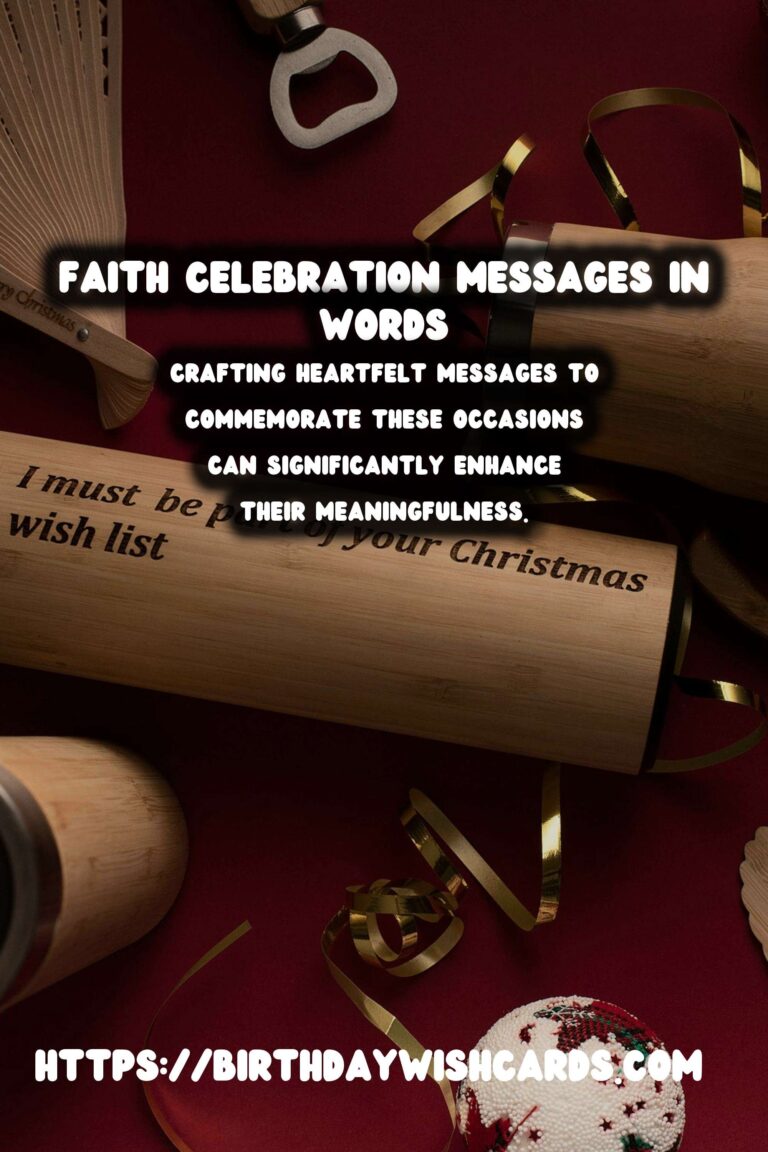
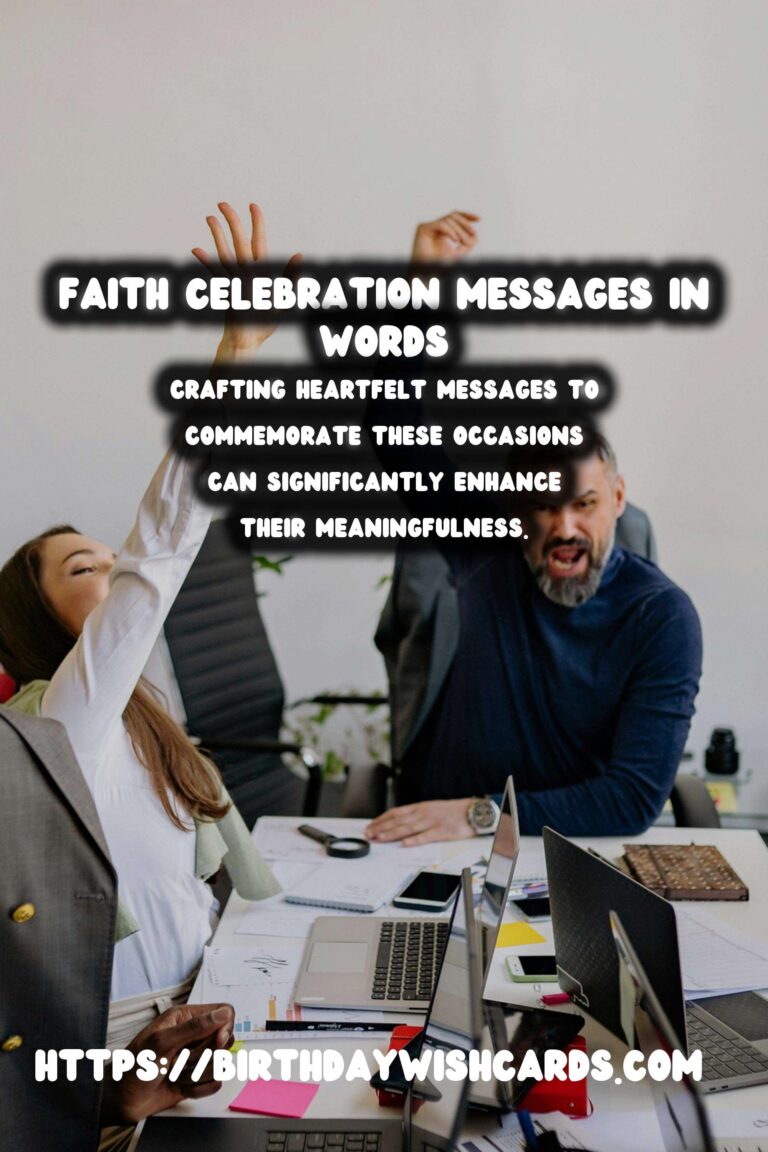
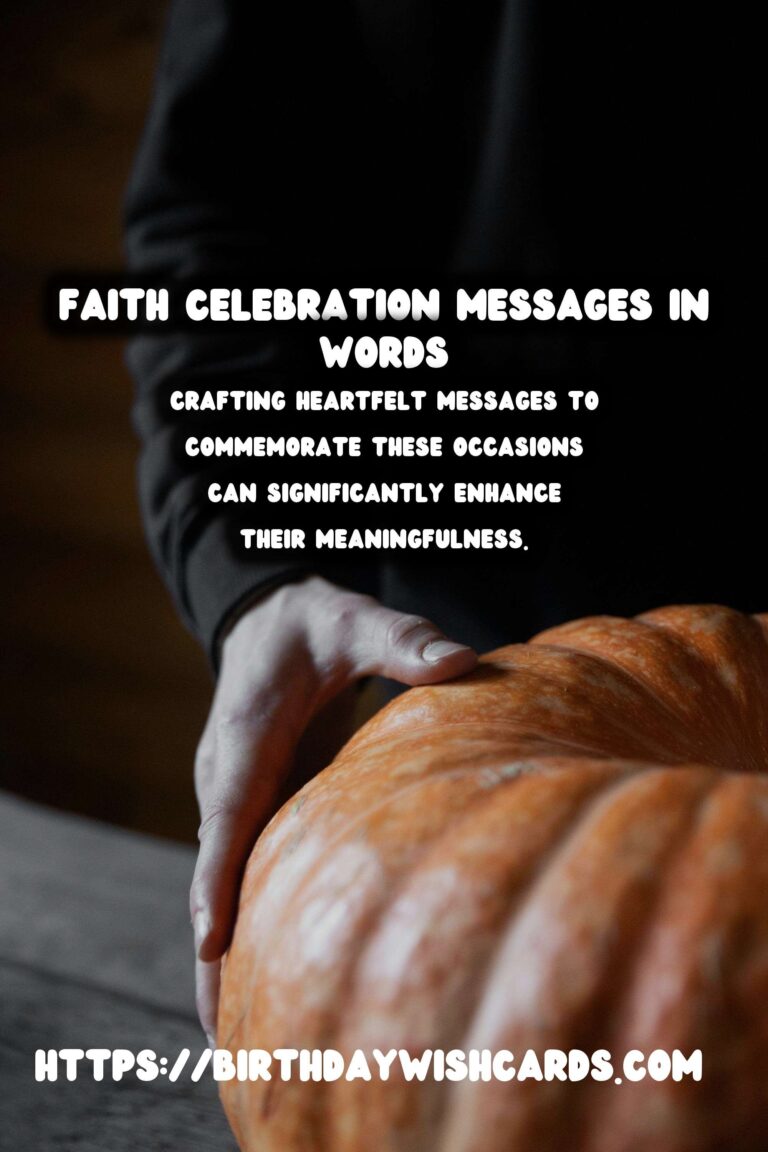
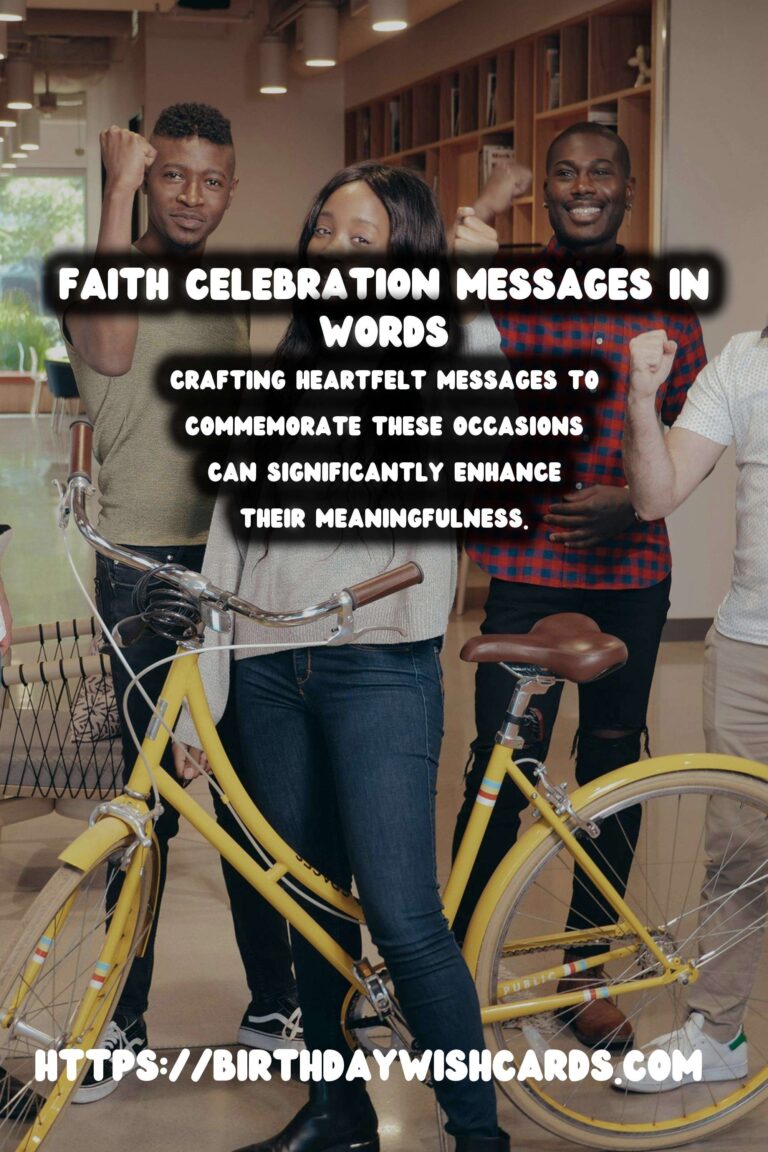

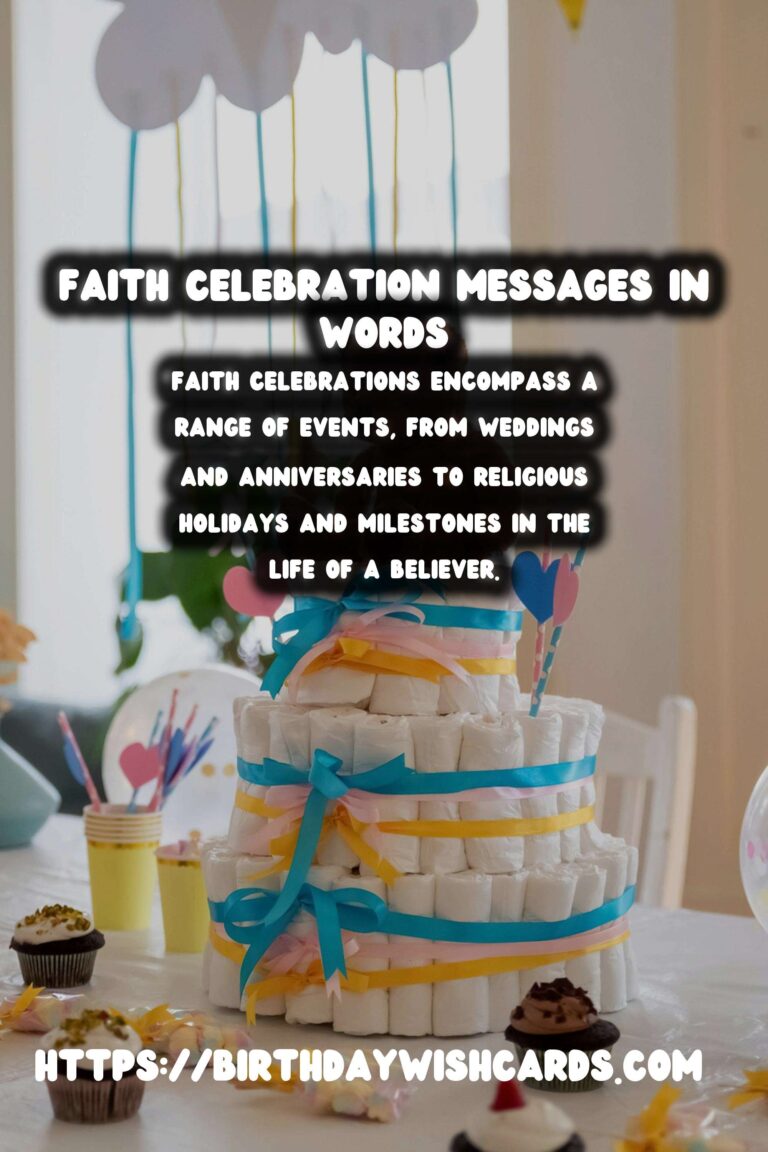


#FaithCelebration #Messages #Weddings #Baptisms #ReligiousHolidays




